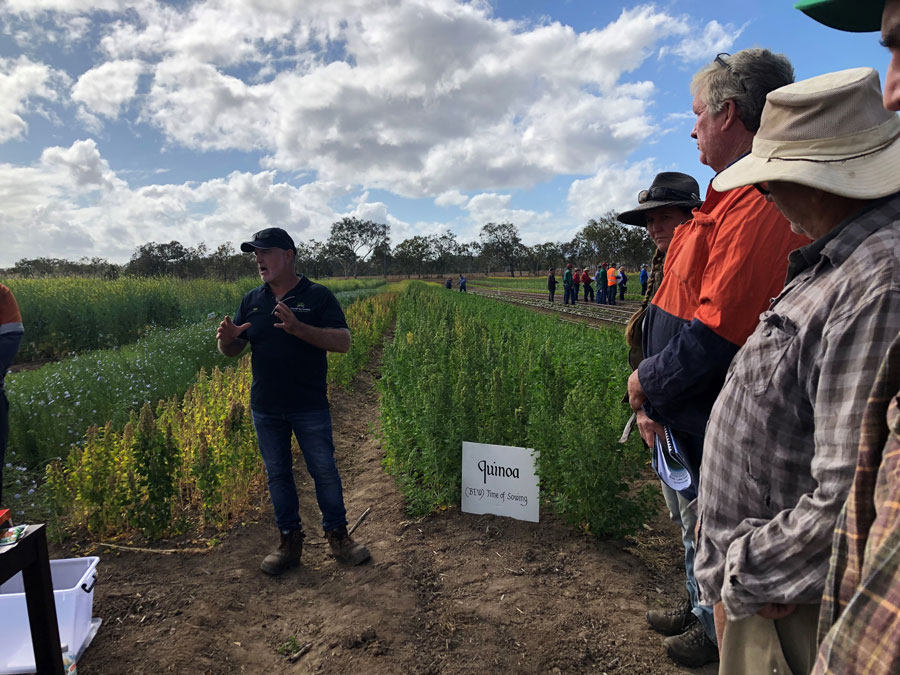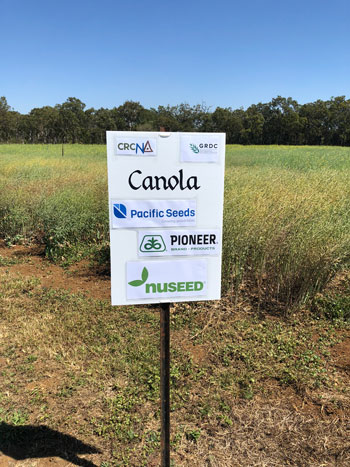Key points
- A situational analysis on broadacre cropping by the Cooperative Research Centre for Developing Northern Australia (CRCNA) has recently been released
- It highlights how important the integration of farming systems is to profitable operations in the far north. Unlike southern Australia, where growers have greater opportunity to specialise in a small number of commodities, northern producers are more agile
- The area encompasses potential broadacre cropping areas that stretch from the Fitzroy River and Ord region of Western Australia into the Northern Territory and across to the Gulf of Carpentaria and the Atherton Tablelands of Queensland
- The report details 10 recommendations to address broadacre cropping production constraints from the mix of production environment, regulation, market requirements and infrastructure support
- Already, two of these are being moved forward, with tenders released to act on the report’s recommendations
Broadacre cropping in Australia’s far north has great potential but would be best realised if integrated with other enterprises, particularly beef production.
This is a primary finding from a situational analysis of broadacre cropping in northern Australia by the Cooperative Research Centre for Developing Northern Australia (CRCNA).
The CRCNA was established in 2017 in response to the Australian Government’s agenda to develop the north, including its agricultural potential.
Northern Australia has long been touted for its agriculture promise. The region includes potential broadacre cropping areas that stretch from the Fitzroy River and Ord region of Western Australia into the Northern Territory and across to the Gulf of Carpentaria and the Atherton Tablelands of Queensland. The region is adjacent to the GRDC northern sub-regions of Central Queensland and the North Queensland coastal and tablelands regions from Mackay to the Burdekin.
Its characteristics include tropical, subtropical and temperate environments; diverse soil types with varied suitability for cropping; summer dominant rainfall and irrigation opportunities.
The region supports a high percentage of cattle operations which, along with horticulture, sugarcane and cotton, are a significant contributor to the farming system overall.
However, GRDC, along with the CRCNA and the Northern Australia Crop Research Alliance (NACRA), interested growers, advisers and researchers, have collectively been investigating the opportunities and constraints for leviable crops in this region since 2017. To date GRDC has co-invested – on a small scale – with research partners to assist with trials.
Recently released, the CRCNA-funded situational analysis is the first step in furthering the region’s cropping potential. It made two primary findings: firstly, that broadacre cropping’s barriers, costs and risks need to be leveraged against a broader agricultural business to be both sustainable and profitable and, secondly, that learning at local and regional scales is essential, with decision-making and investment supported by local data gathered from regional research and commercial scale trials.

‘Prestwood Station’ in Far North Queensland is one of the sites participating in the CRCNA and GRDC ‘De-risking broadacre cropping options for Northern Queensland’ project. From left to right: Professor Joe Eyre, the Queensland Alliance for Agriculture and Food Innovation (QAAFI); growers Beverley and Reg Pedracini; Laura Miller, project participant Northern Gulf Resource Management; and QAAFI’s Professor Daniel Rodriguez. Photo: supplied
Recommendations
The report details 10 recommendations to address constraints that arise from the interaction of production environment, regulation, market requirements and infrastructure support.
Already, two of these are being moved forward, with tenders released to act on the report’s recommendations.
These two relate to production data needs and storage and handling research and development.
One of the report’s project leaders, Brondwen MacLean from Pivotal Management Consulting, says production data needs to be generated to validate and update previous modelling predictions. “Some growers in the region get much higher yields than modelling data predicts.”
Updating production data would also provide feedback on how small-scale trial results are best implemented into commercial farming business operations to maximise profit and sustainability.
The other recommendation, on storage and handling R&D, would aim to better understand key storage and handling requirements. “As the industry matures, there is also the potential to use the well-established and still-in-demand grower storage workshops run by GRDC.”
The situational analysis also recommends:
- the development of a joint vision for agricultural development across each region based on environment and enterprise mix (not state borders). This would involve growers, processors, members of the public and government to support discussion and debate on how broadacre cropping opportunities can be realised while protecting inherent ecological and cultural values;
- the continued development of Landholder Advisory Group (LAG) support across north Queensland, initially focusing on the Flinders, Gilbert and Mitchell catchments and sugarcane production systems in the Burdekin and Mareeba–Dimbulah Water Supply Scheme (MDWSS). The CRCNA would also work with existing LAGs to identify cropping R&D priorities within overall farming systems and actively participate in R&D activities;
- the CRCNA facilitates the interaction of stakeholders and provides rigorously reviewed information to support an evidence-based development of catchment-wide strategies;
- greater collaboration between research entities and with potential private sector suppliers to minimise trial costs and ensure critical infrastructure availability;
- regional agronomists participate in LAGs to provide feedback and information from and to their wide range of grower clients;
- the CRCNA considers the potential to facilitate ongoing interaction between the National Agricultural Labour Advisory Committee and interested grower and industry groups to ensure that strategic options are suitable for and can be implemented in northern Australia;
- working with growers, industry and rural research and development corporations (RDC) to identify and address research, development and extension (RD&E) needs on a whole-of-farm and value chain basis; identify business constraints and opportunities across multiple commodities; and develop RD&E strategies that will contribute to the profitability and sustainability of northern Australian farming businesses;
- linking the existing project ‘Reframing smart supply chains in northern Australia’ with large trading companies operating in the north such as GrainCorp and ADM, as well as smaller accumulators such as CQ Commodities, to further understand the key storage and handling requirements underpinning a viable model. This will be key to designing the R&D into the most efficient solution; and
- adopting sustainable farming systems generating product that is driven by market demand.
Cropping investigations
Together, the CRCNA, Cotton RDC and GRDC have invested in four cropping projects across northern Australia at sites in Far North Queensland, Katherine and central Northern Territory and northern WA.
These are preliminary projects investigating agronomic management in the region with the aim of providing growers and advisers with the knowledge and tools for successful grain production.
These current projects include investment in crop trials in cereals, oilseeds and grain legumes, as well as cotton.
Potential for broadacre cropping in the NT
This project will collate historical broadacre cropping data, natural resource information and an understanding of market opportunities to support the development of viable broadacre cropping systems in the NT.
The initial focus will be on rain-fed and irrigated systems growing cotton and peanut crops, while maize, sorghum, rice and pulses will also be investigated as possible break crop options.
A critical output will be assessing the regional potential for broadacre cropping. While it is a long-held belief that this potential exists, this project will build on earlier studies to further understand the opportunities and constraints across the Katherine/Douglas-Daly region, building on the CSIRO Northern Australia Water Resource Assessment study for the Darwin regions.

A field day held at Savannah Ag Consulting’s Biboohra trial site in Far North Queensland attracted more than 100 growers and agronomists from across Queensland and the Northern Territory. Here, Savannah Ag’s Tony Matchett discusses his findings. Photo: supplied
De-risking broadacre cropping options in northern Queensland
This project takes a participatory on-farm approach with growers to inform and drive the RD&E activities to identify the best crop and management options and bridge gaps between present and potential yields. The research assists in building growers’ skills and identifying high-profit and low-risk options in broadacre cropping by trialling sorghum, maize and forage crops.
Developing a broadacre cropping sector in northern Queensland
Working with existing and new grain growers and the agribusiness sector within the Gulf River catchments, this project aims to assist in the development of local cropping systems and agronomic skills.
Within northern Queensland’s Gulf River catchments, there is limited experience and knowledge around the performance and profitability of potential dryland and irrigated grain crops. An understanding of this variability is critical to provide local landholders and potential investors with the knowledge and risk assessment needed to develop profitable farming systems.
This project is providing opportunities for local landholders and agribusiness personnel to develop the necessary knowledge and skills needed for successful production of grain within existing extensive grazing enterprises.
Developing an oilseed industry in northern Australia
This research focusses on identifying the best bets from a range of adapted oilseed crops, which may have commercial capacity and be a high-value component of a northern Australia cropping system.
Oilseed crops, both summer and winter, have been trialled on a very small scale in Far North Queensland, with promising results. This work has included crops such as soybeans, safflower, linseed, canola, mustard and nigella.
 HyTTEc Trident Canola is also being trialled at Biboohra on the Atherton Tablelands in Far North Queensland as part of the CRCNA and GRDC’s ‘Developing an oilseed industry in Northern Australian’ project. Photo: supplied
HyTTEc Trident Canola is also being trialled at Biboohra on the Atherton Tablelands in Far North Queensland as part of the CRCNA and GRDC’s ‘Developing an oilseed industry in Northern Australian’ project. Photo: supplied
GRDC has also invested in National Variety Trials for chickpeas and sorghum at the Kimberley Research Station at Kununurra, while a GRDC partnership project with the Queensland Department of Agriculture and Fisheries includes a grain storage component with a focus on management for environments such as at the Port of Townsville and the Ord.
More recently, GRDC has also invested in additional pesticide efficacy work related specifically to fall armyworm (FAW).
GRDC chair John Woods says that the region has production potential in terms of land availability and relatively regular access to water in certain areas.
“GRDC has made a small but strategic investment in RD&E in far northern Australia. We are committed to driving multi-party collaboration as we understand (that) while grain is unlikely to be the pillar crop, it will have a critical place in profitable and sustainable farming systems,” Mr Woods says.
“The RD&E that GRDC is investing in has been designed to deliver results that are transferable and relevant across all three jurisdictions, from the Gulf to Katherine and Kununurra.
“The challenge for grain production in the region will be building economically viable cropping systems, varieties suited for irrigated and dryland broadacre cropping in those environments and access to markets.”
Carla Keith, 07 4426 2806, commsmanager@crcna.com.au, www.crcna.com.au

























































